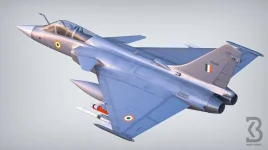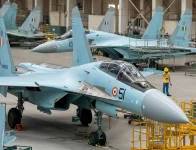- Views: 5K
- Replies: 27
India could potentially save billions of dollars and rapidly modernize its air force by opting for a "Made in India" version of the Russian Su-57 fighter jet over the American F-35, according to recent claims by Russian officials. This move could also open significant export opportunities for India in the global defence market.
At a recent defence event, representatives from Rostec, Russia's state-owned defence corporation, stated that an Indian-manufactured variant of the Su-57 Felon, Russia's fifth-generation stealth fighter, would be considerably less expensive than the Lockheed Martin F-35A Lightning II.
While the F-35A currently has a flyaway cost of approximately $78-80 million per unit (according to Lockheed Martin and US Department of Defence figures for Fiscal Year 2024), Rostec officials suggested the Indian-produced Su-57 would undercut this price. The precise cost of the "Made in India" Su-57 was not disclosed.
The F-35's flyaway cost, while decreasing in recent years due to increased production, does not include the substantial additional expenses associated with maintaining the aircraft, training pilots, and integrating weapons systems. These factors can significantly increase the overall lifecycle cost per jet, often exceeding $100 million.
Rostec's claim implies that a Su-57, produced within India's cost-effective manufacturing environment, could achieve a price significantly below the $80 million benchmark.
Drawing parallels with India's licensed production of the Su-30MKI by Hindustan Aeronautics Limited (HAL), analysts have provided potential cost estimations. A recent order of 12 Su-30MKI jets by the Indian Air Force (IAF) cost approximately $1.6 billion, or $133 million per unit. However, that price reflected a small, highly customized order.
With a larger production run and streamlined processes, experts believe a "Made-in-India" Su-57 could cost between $60 million and $75 million per unit. This estimation considers India's lower labor and material expenses, technology transfer agreements, and the experience gained from HAL's Su-30MKI program, where larger order per-unit costs were in $62-70 million range, with earlier Russian supplied units costing as low as $40 million.
The success of this cost-saving strategy depends heavily on India's ability to mirror its achievements with the Su-30MKI program, which involves a blend of imported components (such as engines and radar) and domestically produced parts.
Russia's apparent willingness to transfer a greater degree of Su-57 technology, in contrast to the highly restricted F-35 program, could further reduce costs by eliminating the premium associated with U.S. export controls and intellectual property rights.
A Su-57 priced below $80 million would be a significant development for both India and the international defence market. The IAF is currently facing a reduction in its operational squadron strength, aiming for 42 squadrons but currently operating around 30. An affordable fifth-generation jet could swiftly address this shortfall, providing a stopgap solution while India's indigenous AMCA program, scheduled for 2032, is under development.
The Su-57 would complement the IAF's existing fleet, which includes Su-30MKIs, Rafale jets, and the anticipated LCA Tejas Mk1A and Mk2, adding a stealth capability currently lacking in the fourth-generation aircraft.
On a global scale, a competitively priced Su-57 could disrupt the F-35's market share, particularly in regions like Southeast Asia, Africa, and Latin America, where the F-35's extensive lifecycle costs (estimated to be $1.7 trillion across the fleet's lifespan, as of 2023 figures ) are often prohibitive.
Nations currently operating Su-30 aircraft, such as Vietnam, Algeria, and Indonesia, might find a "Made-in-India" Su-57 a compelling and financially viable upgrade, potentially supported by financing options from Russia and India. This could significantly enhance India's position as a major arms exporter.


